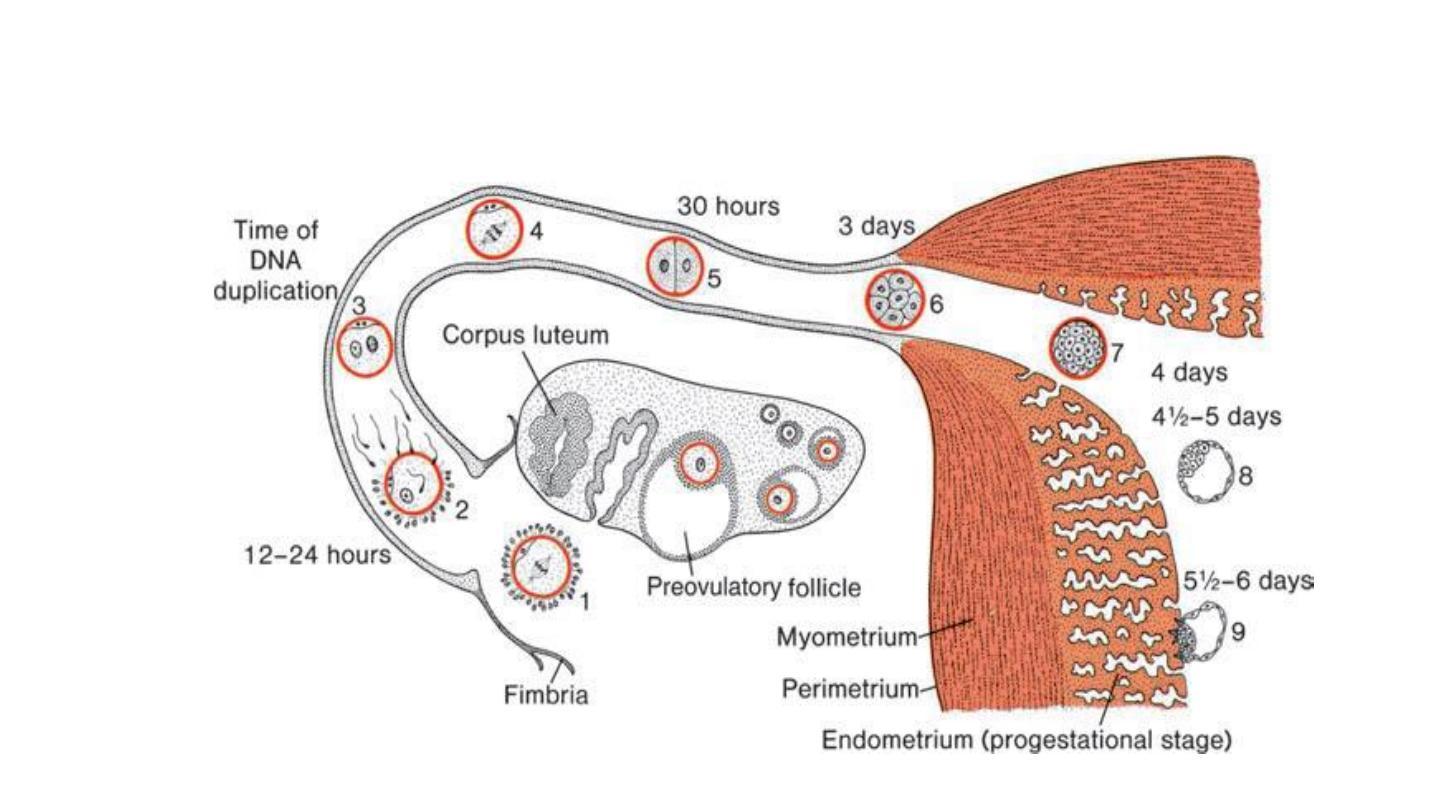
Cleaveg ,blastocyst formation
and implantation

Cleavage
Once the zygote has reached the two-cell stage, it undergoes a series of
mitotic divisions,increasing the numbers of cells.
These cells , which become smaller with each cleavage division, are known
as blastomeres. Until the eight-cell stage, they form a loosely arranged
clump.
After the third cleavage, however, blastomeres maximize their contact with
each other, forming a compact ball of cells held together by tight junctions

Approximately 3 days after fertilization, cells of the compacted embryo
divide again to form a 16-cell morula (mulberry). Inner cells of the morula
constitute the inner cell mass, and surrounding cells composed the outer
cell mass.
The inner cell mass gives rise to tissues of the embryo proper.
The outer cell mass forms the trophoblast, which later contributes to the
placenta.
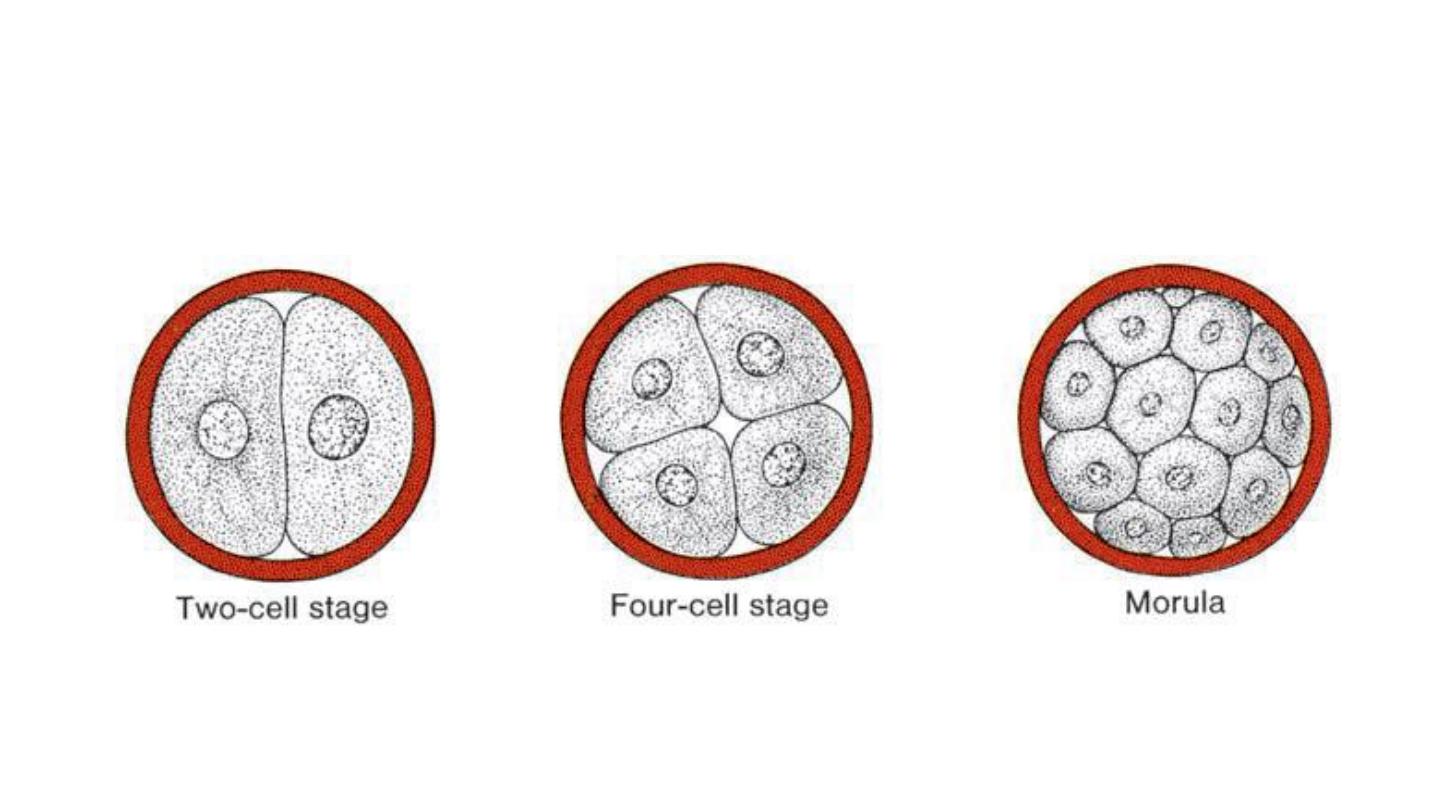

BLASTOCYST FORMATION
About the time the morula enters the uterine cavity, fluid begins to penetrate
through the zona pellucida into the intercellular spaces of the inner cell mass
and finally, a single cavity (blastocele) forms.
At this time, the embryo is a blastocyst.
Cells of the inner cell mass, now called the embryoblast, are at one pole.
Cells of the outer cell mass, or trophoblast, flatten and form the epithelial
wall of the blastocyst.
.
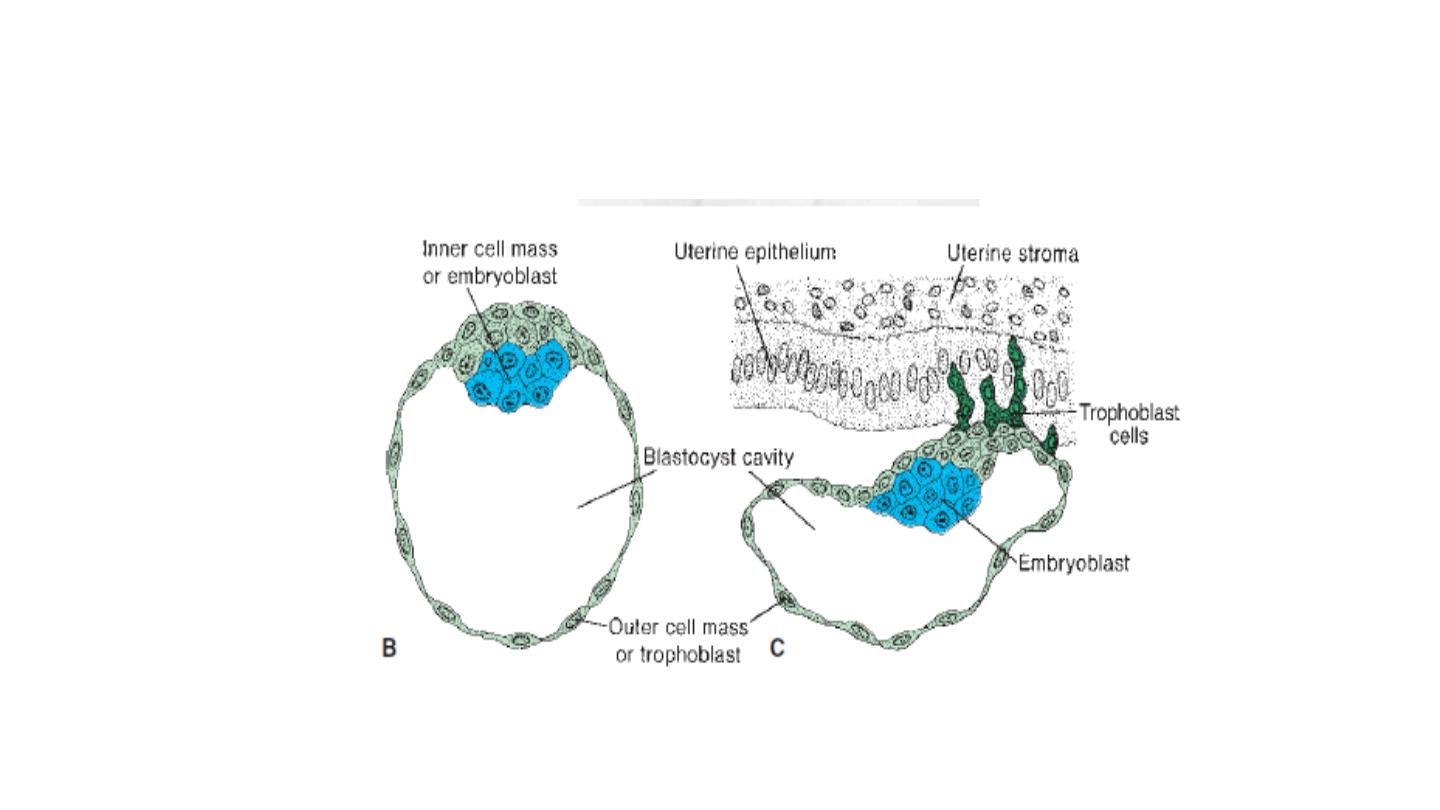

The zona pellucida has disappeared, allowing implantation to begin.
In the human, trophoblastic cells over the embryoblast pole begin to
penetrate between the epithelial cells of the uterine mucosa on about the
sixth day.
New studies suggest that L selectin on trophoblast cells and its
carbohydrate receptors on the uterine epithelium mediate initial
attachment
of the blastocyst to the uterus
,
so that implantation is the result of mutual
trophoblastic and endometrial action.

By the end of the first week of development , the human zygote through the
morula and blastocyst stages and has begun implantation in the uterine mucosa.
The wall of the uterus consists of three layers:
1-Endometrium.
2-Myometrium.
3-Perimetium.
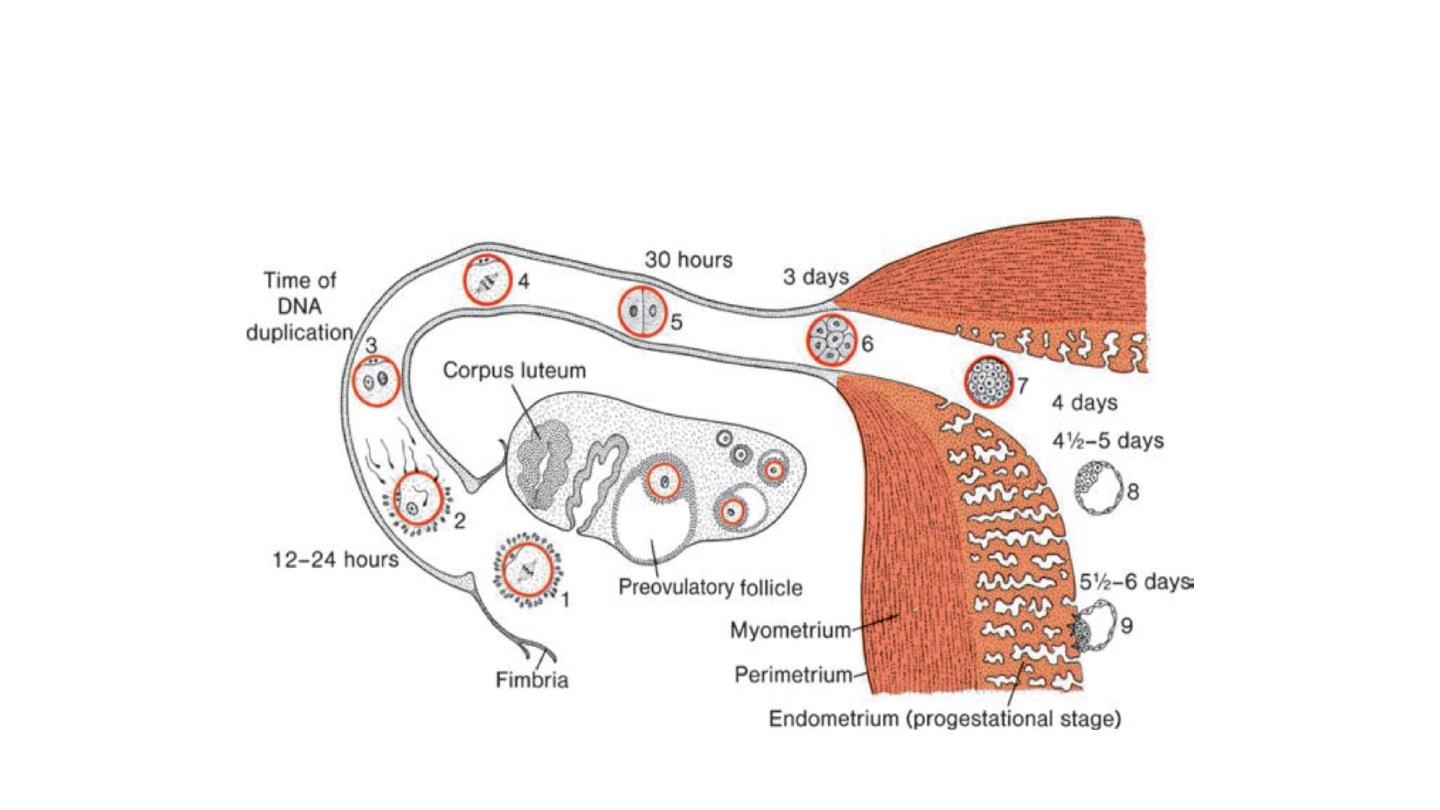

During the menstrual cycle ,the uterine endometrium passes through
three stages :
1- Follicular or proliferative phase
2-Secreatory or progestational phase
3-Menstrual phase.
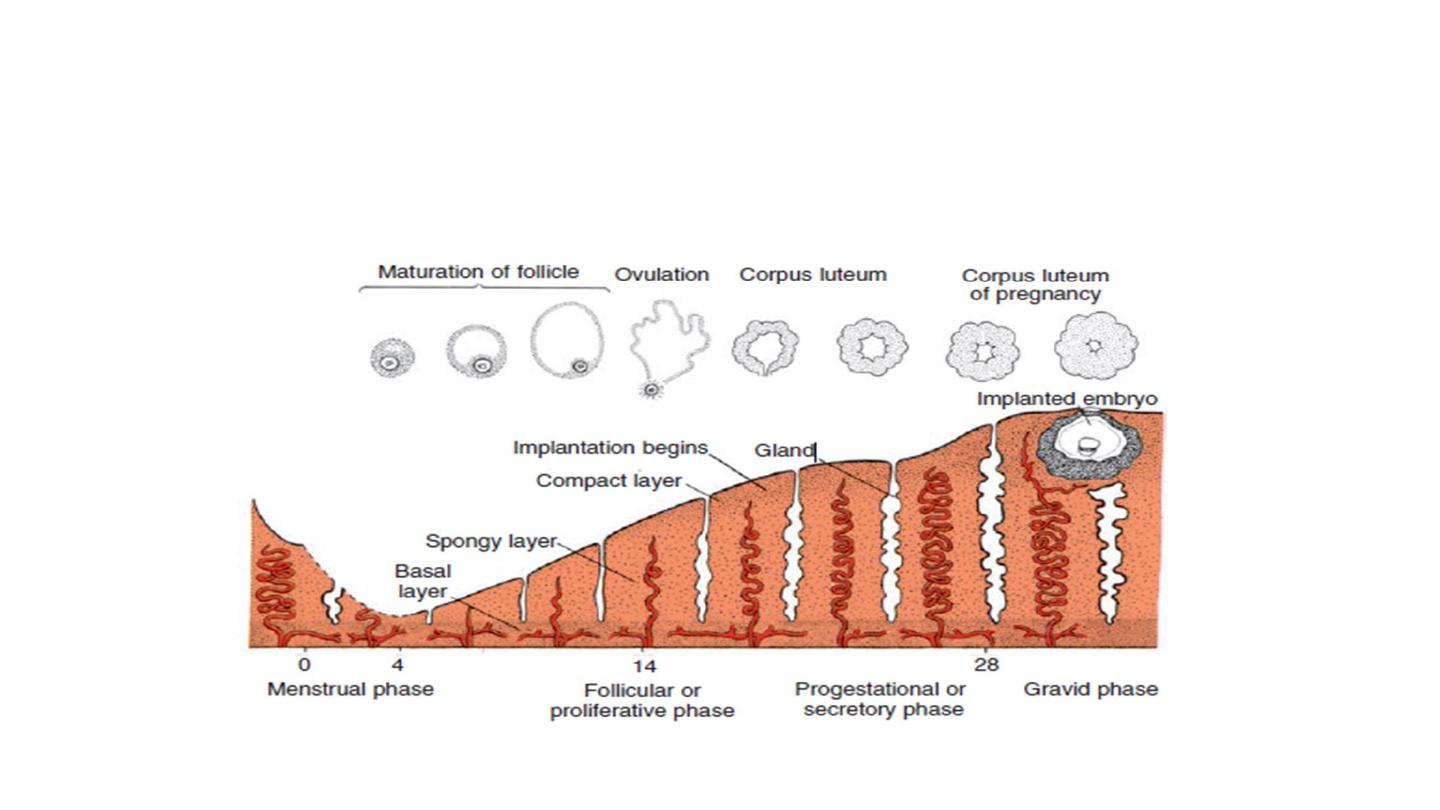

The uterus at the time of implantation is in the secretory phase, and the
blastocyst implants in the endometrium along the anterior or posterior wall.
If fertilization does not occur, then the menstrual phase begins, and the
spongy and compact endometrial layers are shed.
The basal layer remains to regenerate the other layers during the next cycle.
